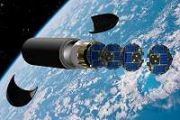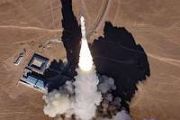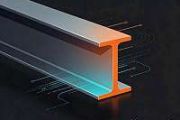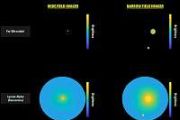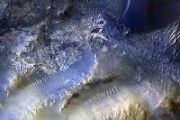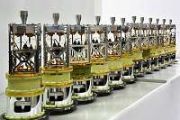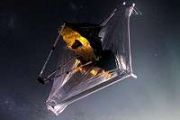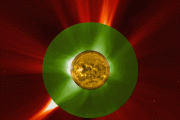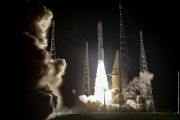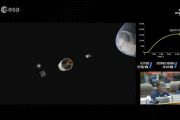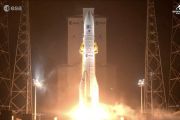
Copernical Team
Lockheed Martin delivers its highest powered laser to date to US Department Of Defense
 Lockheed Martin (NYSE: LMT) delivered to the Office of the Under Secretary of Defense for Research and Engineering OUSD (R&E) a new benchmark: a tactically-relevant electric 300 kW-class laser, the most powerful laser that Lockheed Martin has produced to date. This 300 kW-class laser is ready to integrate with the DOD demonstration efforts including the U.S. Army's Indirect Fires Protection Capa
Lockheed Martin (NYSE: LMT) delivered to the Office of the Under Secretary of Defense for Research and Engineering OUSD (R&E) a new benchmark: a tactically-relevant electric 300 kW-class laser, the most powerful laser that Lockheed Martin has produced to date. This 300 kW-class laser is ready to integrate with the DOD demonstration efforts including the U.S. Army's Indirect Fires Protection Capa FCC grants Lynk first-ever license for commercial satellite-direct-to-standard-mobile-phone service
 Lynk Global, Inc. (Lynk), the world's leading satellite-direct-to-standard-phone telecoms company, has expressed its appreciation to the Federal Communications Commission (FCC) for granting Lynk the world's first-ever commercial license for a satellite-direct-to-standard-mobile-phone service. This FCC license enables Lynk to launch commercial services for its global constellation of satellites l
Lynk Global, Inc. (Lynk), the world's leading satellite-direct-to-standard-phone telecoms company, has expressed its appreciation to the Federal Communications Commission (FCC) for granting Lynk the world's first-ever commercial license for a satellite-direct-to-standard-mobile-phone service. This FCC license enables Lynk to launch commercial services for its global constellation of satellites l Satellite mission confirms cornerstone of general relativity is unshakeable
 The MICROSCOPE mission has confirmed the 'equivalence principle' with unprecedented accuracy, bolstering Einstein's general relativity.
The result, announced this week by a team led by the French space agency CNES, is a triumph for Einstein's general relativity. However, it also potentially rules out some candidate universal theories of physics.
General relativity is the best theory
The MICROSCOPE mission has confirmed the 'equivalence principle' with unprecedented accuracy, bolstering Einstein's general relativity.
The result, announced this week by a team led by the French space agency CNES, is a triumph for Einstein's general relativity. However, it also potentially rules out some candidate universal theories of physics.
General relativity is the best theory Chinese astronauts go on spacewalk from new station
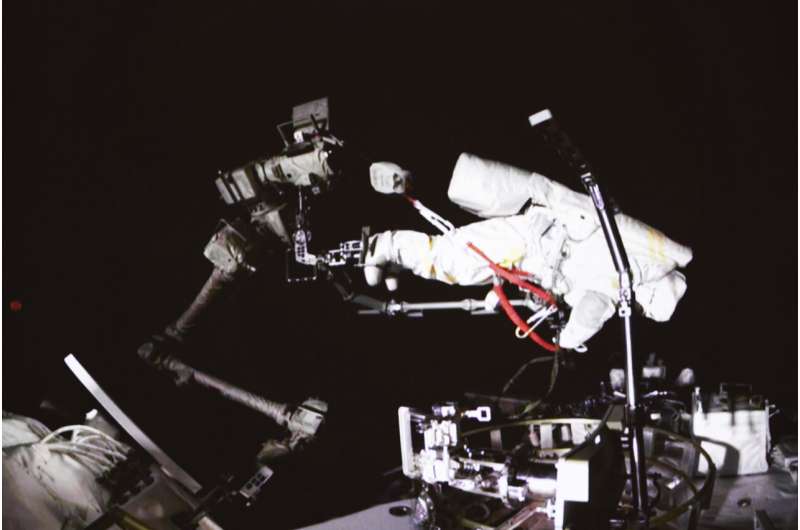
Two Chinese astronauts went on a spacewalk Saturday from a new space station that is due to be completed later this year.
Cai Xuzhe and Chen Dong installed pumps, a handle to open the hatch door from outside in an emergency, and a foot-stop to fix an astronaut's feet to a robotic arm, state media said.
Shenzhou astronauts carry out second spacewalk
 Crew members on the Shenzhou XIV mission stepped out of their spacecraft for the second spacewalk on Saturday afternoon, according to the China Manned Space Agency.
The agency said in a brief news release that Senior Colonel Cai Xuzhe opened an extravehicular activity hatch on the Tiangong space station at 1:35 pm and then floated out of the station. He was followed by mission commander Se
Crew members on the Shenzhou XIV mission stepped out of their spacecraft for the second spacewalk on Saturday afternoon, according to the China Manned Space Agency.
The agency said in a brief news release that Senior Colonel Cai Xuzhe opened an extravehicular activity hatch on the Tiangong space station at 1:35 pm and then floated out of the station. He was followed by mission commander Se How gravity gives astronomers a powerful lens on the universe
 In 1919 astronomers Arthur Eddington and Andrew Crommelin captured photographic images of a total solar eclipse. The Sun was in the constellation Taurus at the time, and a handful of its stars could be seen in the photographs. But the stars weren't quite in their expected place. The tremendous gravity of the Sun had deflected the light of these stars, making them appear slightly out of place. It
In 1919 astronomers Arthur Eddington and Andrew Crommelin captured photographic images of a total solar eclipse. The Sun was in the constellation Taurus at the time, and a handful of its stars could be seen in the photographs. But the stars weren't quite in their expected place. The tremendous gravity of the Sun had deflected the light of these stars, making them appear slightly out of place. It Jupiter to reach opposition, closest approach to Earth in 70 years
 Stargazers can expect excellent views of Jupiter the entire night of Monday, Sept. 26 when the giant planet reaches opposition. From the viewpoint of Earth's surface, opposition happens when an astronomical object rises in the east as the Sun sets in the west, placing the object and the Sun on opposite sides of Earth.
Jupiter's opposition occurs every 13 months, making the planet appear la
Stargazers can expect excellent views of Jupiter the entire night of Monday, Sept. 26 when the giant planet reaches opposition. From the viewpoint of Earth's surface, opposition happens when an astronomical object rises in the east as the Sun sets in the west, placing the object and the Sun on opposite sides of Earth.
Jupiter's opposition occurs every 13 months, making the planet appear la The Perseverance robotic arm tightrope of abrasion proximity science
 The SHERLOC and PIXL proximity science instruments on Perseverance have enabled more detailed observations of Martian chemistry and minerology than ever before. PIXL can isolate features as small as a grain of sand. To achieve this, these instruments on the end of the robotic arm must be placed at a precise distance from the feature of interest - very close, but not too close. PIXL even has a "h
The SHERLOC and PIXL proximity science instruments on Perseverance have enabled more detailed observations of Martian chemistry and minerology than ever before. PIXL can isolate features as small as a grain of sand. To achieve this, these instruments on the end of the robotic arm must be placed at a precise distance from the feature of interest - very close, but not too close. PIXL even has a "h Scientists believe Mars rock samples contain organic matter
 Scientists believe some of the recently-collected rock samples taken by NASA's Perseverance Mars rover likely contain organic matter.
The four most recent samples are all sedimentary rocks from an ancient river delta in the Red Planet's Jezero Crater, NASA confirmed this week.
They mark the first-ever sedimentary rocks gathered from another planet.
"The rocks that we have
Scientists believe some of the recently-collected rock samples taken by NASA's Perseverance Mars rover likely contain organic matter.
The four most recent samples are all sedimentary rocks from an ancient river delta in the Red Planet's Jezero Crater, NASA confirmed this week.
They mark the first-ever sedimentary rocks gathered from another planet.
"The rocks that we have Chinese scientists discover history of volcanic eruptions in Chang'e-5 landing region
 A research team from China has discovered geological evidence of at least four layers of volcanic lava flows that flooded the landing region of the Chang'e-5 lunar exploration mission, according to a press release from the National Space Science Center (NSSC) of the Chinese Academy of Sciences.
China's Chang'e-5 mission brought a total of 1,731 grams of lunar samples back to Earth at the e
A research team from China has discovered geological evidence of at least four layers of volcanic lava flows that flooded the landing region of the Chang'e-5 lunar exploration mission, according to a press release from the National Space Science Center (NSSC) of the Chinese Academy of Sciences.
China's Chang'e-5 mission brought a total of 1,731 grams of lunar samples back to Earth at the e 



